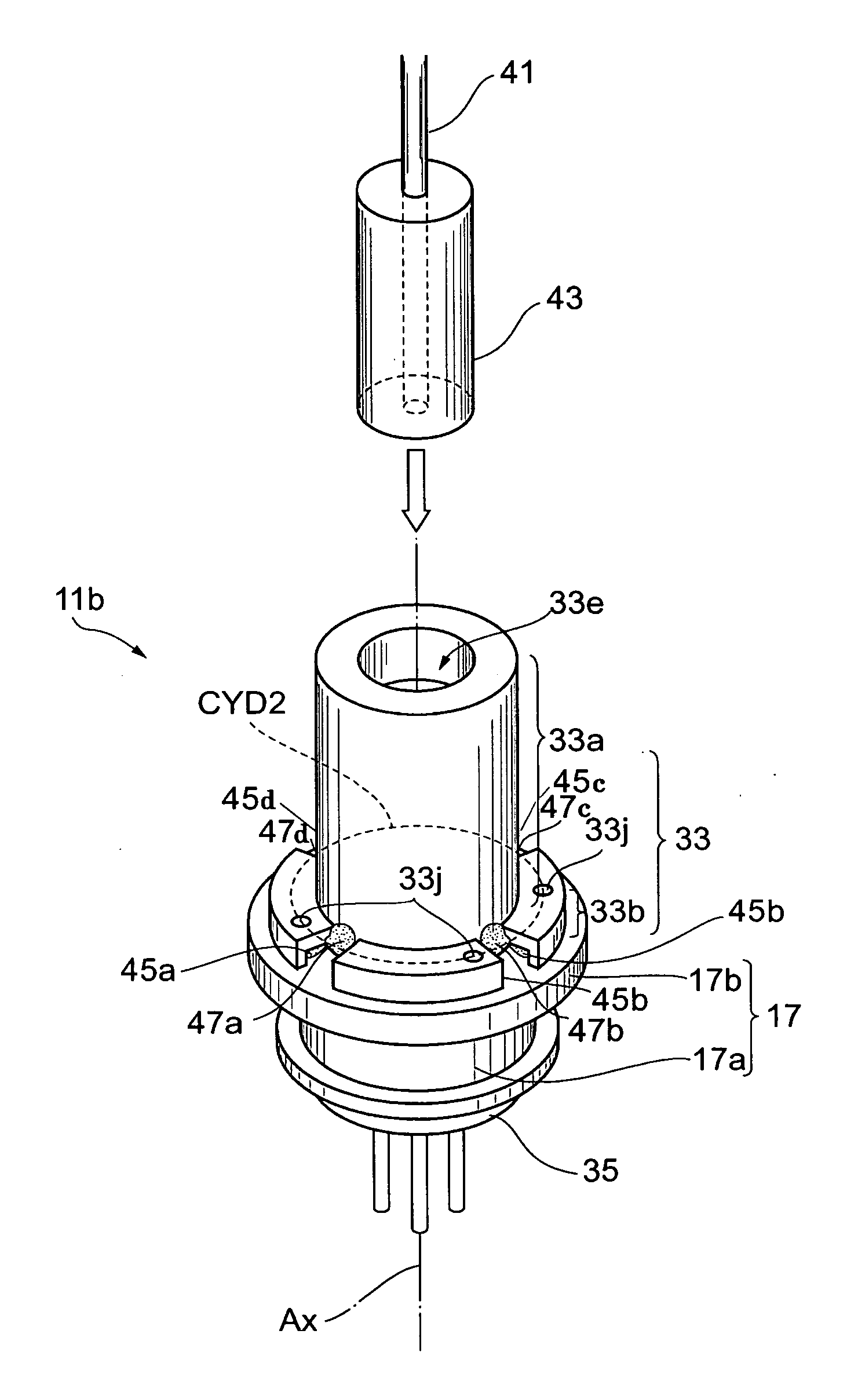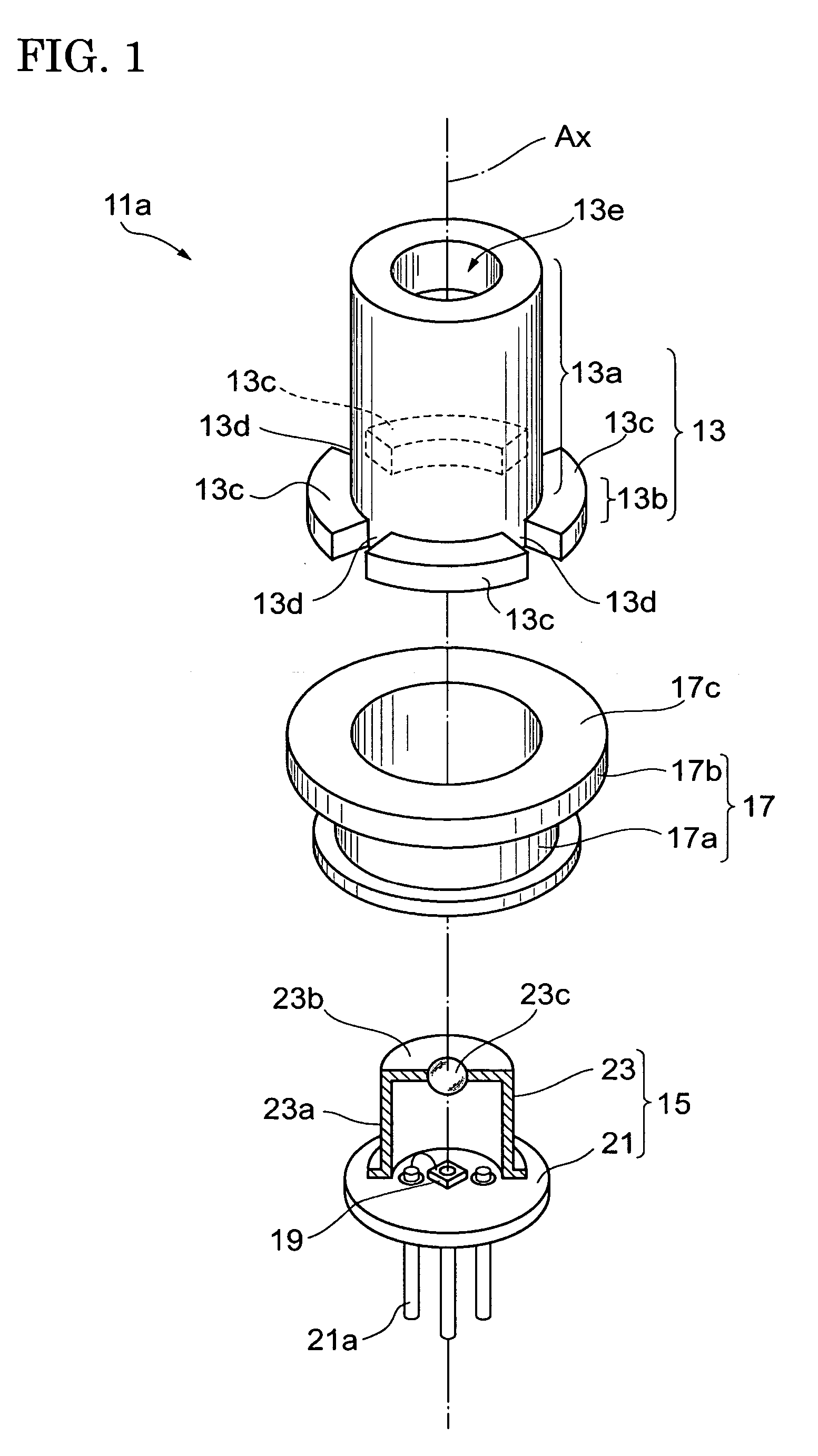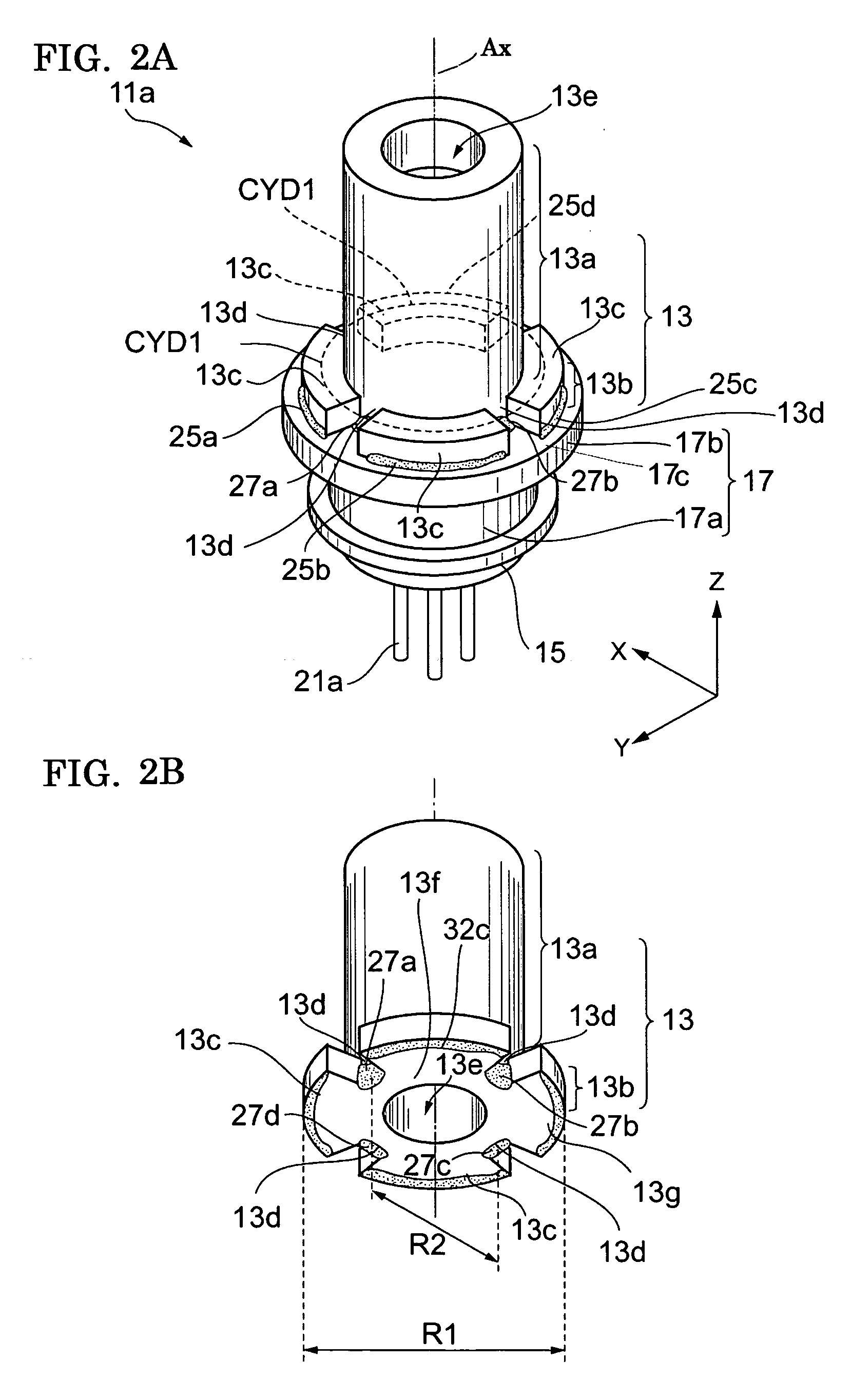Optical module and method of manufacturing the same
a technology of optical modules and optical light guides, applied in the field of optical modules, can solve the problems of inability to improve the bonding strength and the uneven thickness of the resin applied to the circumference of the stem portion, and achieve the effect of reducing the deviation in optical alignmen
- Summary
- Abstract
- Description
- Claims
- Application Information
AI Technical Summary
Benefits of technology
Problems solved by technology
Method used
Image
Examples
first embodiment
[0080]FIG. 1 is a diagram showing components that constitute an optical module in a first embodiment. FIG. 2A is a diagram showing an optical module in the first embodiment, and FIG. 2B is a diagram showing an optical-receptacle housing of the optical module. An optical module 11a comprises an optical-receptacle housing 13, an optical-communication subassembly 15, and a holder 17. The optical-receptacle housing 13 has a receptacle portion 13a, which extends along a predetermined axis, Ax, and a flange portion 13b provided at one end of the receptacle portion 13a. The axis Ax can be positioned at the center of the optical-receptacle housing. The optical-communication subassembly 15 has a stem 21, which mounts a semiconductor optical device 19, and a cap 23 covering the semiconductor optical device 19. The holder 17 has a side-wall portion 17a, which extends along the predetermined axis, and a mounting portion 17b provided at one end of the side-wall portion 17a to mount the optical-r...
second embodiment
[0091]FIG. 3 is a diagram showing components that constitute an optical module in a second embodiment. FIG. 4 is a diagram showing an optical module in the second embodiment. An optical module 11b comprises an optical-receptacle housing 33, an optical-communication subassembly 35, and a holder 17. The optical-receptacle housing 33 has a receptacle portion 33a, which extends along a predetermined axis, Ax, and a flange portion 33b provided at one end of the receptacle portion 33a. The optical-communication subassembly 35 has a stem 31, which mounts a semiconductor optical device 39, and a cap 23 covering the semiconductor optical device 39. The holder 17 holds the optical-communication subassembly 35 and optically positions the optical-receptacle housing 33 and the optical-communication subassembly 35 with each other. In an example, the optical-receptacle housing 33 and the holder 17 are made of metal.
[0092] The flange portion 33b has a plurality of first portions 33c, which extend ...
third embodiment
[0100]FIG. 6 is a diagram for explaining an optical-module-producing method in a third embodiment. To produce an optical module, the optical-communication subassembly 15, the holder 17, and the optical-receptacle housing 13 are prepared. The optical-communication subassembly 15 is aligned with the holder 17. The optical-communication subassembly 15, the holder 17, and the optical-receptacle housing 13 are held by an assembly tool 51. The assembly tool 51 is used to optically align the optical-receptacle housing 13 with the optical-communication subassembly 15 by, for example, moving the optical-receptacle housing 13 in the X, Y, and Z directions. Lead terminals of the optical-communication subassembly 15 are connected to a measuring tool or power-supply device 55 to electrically connect the semiconductor optical device through connecting wires 53. A ferrule 57 is inserted into the optical-receptacle housing 13. An optical fiber 59 is attached to the ferrule 57. The optical fiber 59 ...
PUM
 Login to View More
Login to View More Abstract
Description
Claims
Application Information
 Login to View More
Login to View More - R&D
- Intellectual Property
- Life Sciences
- Materials
- Tech Scout
- Unparalleled Data Quality
- Higher Quality Content
- 60% Fewer Hallucinations
Browse by: Latest US Patents, China's latest patents, Technical Efficacy Thesaurus, Application Domain, Technology Topic, Popular Technical Reports.
© 2025 PatSnap. All rights reserved.Legal|Privacy policy|Modern Slavery Act Transparency Statement|Sitemap|About US| Contact US: help@patsnap.com



